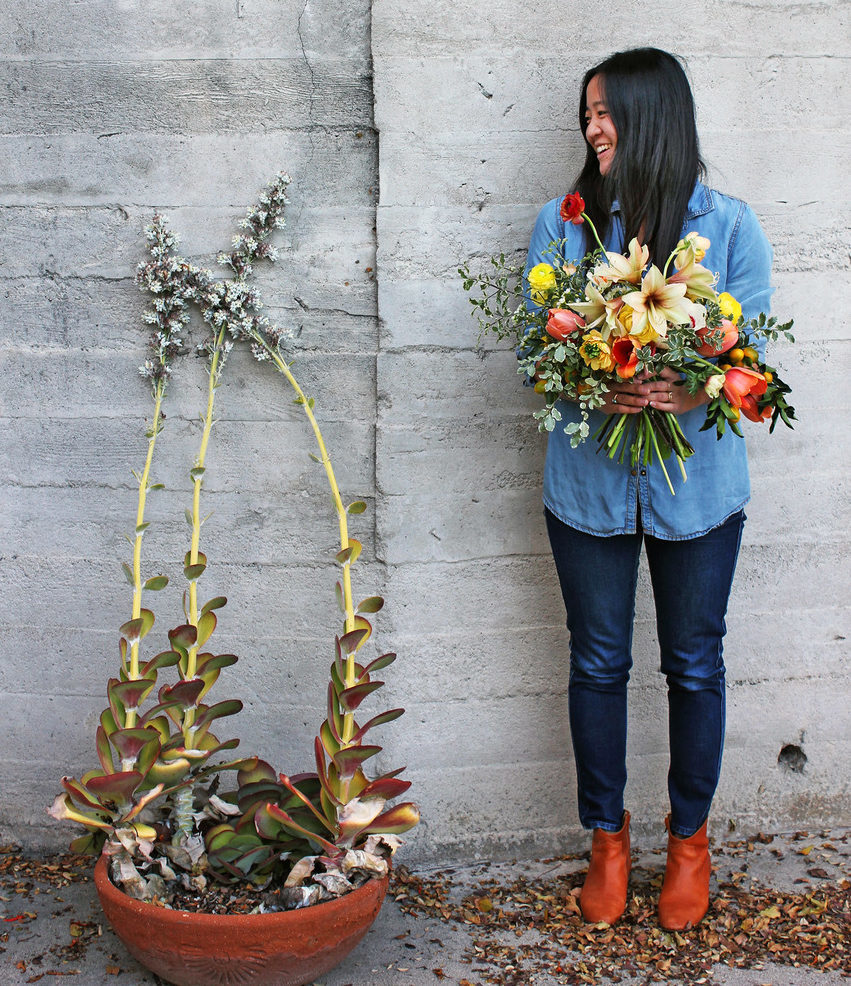
Botanica neatly encapsulates its neighborhood with a menu focused on California produce and natural wines and food meant to be both beautiful and sneakily healthy, that makes you feel as good after you eat it as it tastes while you’re eating it.
Former food writers and editors Emily Fiffer and Heather Sperling have created an entire gestalt experience – from the food to the drinks to the design to the community. JAM sat down to talk with Emily on a Tuesday morning.
Starting from the beginning, where did you grow up and what did you grow up eating?
I grew up in the suburbs of Chicago eating a combination of—I was a child of the 80s—everything. We had a home cooked meal every night. It leaned very vegetarian because my dad does not eat red meat and my mom was allergic to fish. Really delicious homemade meals, but also Snackwells and Crystal Light. Take-out was a treat—when we had babysitters, we got to eat chicken nuggets and Tombstone pizza! On the weekend my mom would make us breakfast, Belgian waffles with amazing stewed fruit and whipped cream. That was really special.
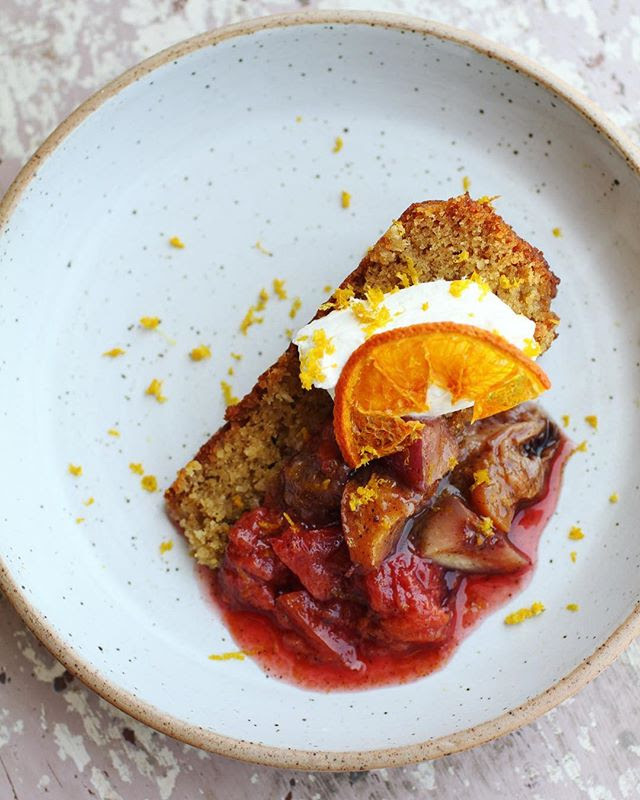
Orange Almond Cake for breakfast
Did you learn how to cook from her?
I was into eating but I wasn’t into cooking. I didn't actually get into cooking until my 20s. I dated a guy in college who was an absolutely exceptional cook. I lived with him for a summer in Truckee, and we cooked every single night, we grilled, and it was just a really good summer. And then I went abroad to Utrecht. I was a student living in this big international building, and we would have these incredible cooking parties where one night the Americans would cook for everybody, one night the Polish people would cook for everybody, and then Italians, and then the Greeks. When I was back in Chicago after graduating and I moved into an apartment by myself, I started cooking in earnest. And I pretty much went from not really caring to diving in headfirst and just giving myself a serious education on cooking and on natural foods. And I started really thinking about what I was putting in my body. So I essentially, overnight, eliminated anything and everything processed that I had been eating and began to feel like a different person. I started making everything from scratch. Everything. I went from zero to a hundred very quickly.
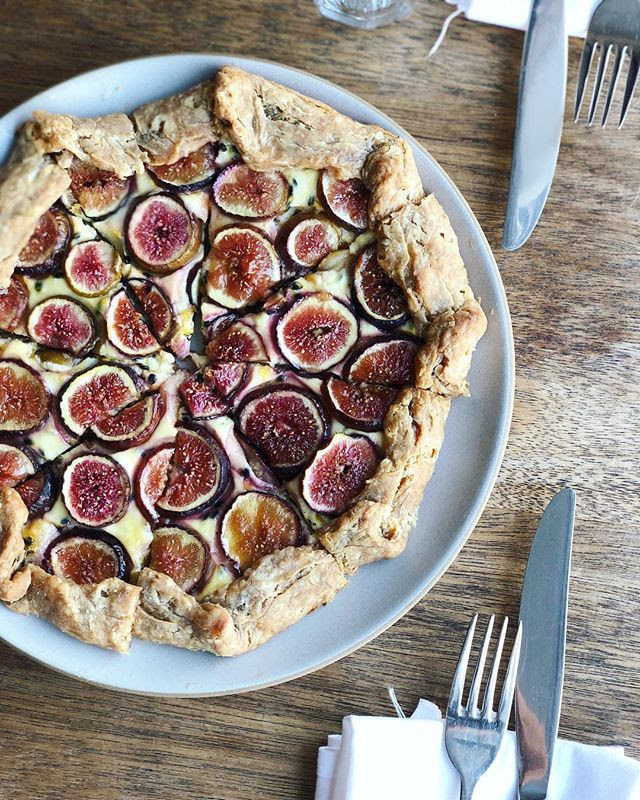
Fig and Ricotta Pizette
Did you look up recipes?
Yeah, that's kind of how I taught myself to cook. I started with a few staples. I would make my version of a grain bowl and I taught myself how to make eggs and I started making my own granola and once you learn how to make certain things, you tweak and play and it obviously took a while to get comfortable. But I really went deep and just immediately loved it because it was fun for me to provide for myself. I started going to farmers markets and started to understand what seasonality meant. I remember eating all of my first farmers market vegetables and understanding the difference in a really fundamental way. Like, oh, this is what asparagus tastes like in spring, this is what a strawberry tastes like in summer.
So you started in food writing?
I started at Daily Candy [a lifestyle website] as the Chicago editor.
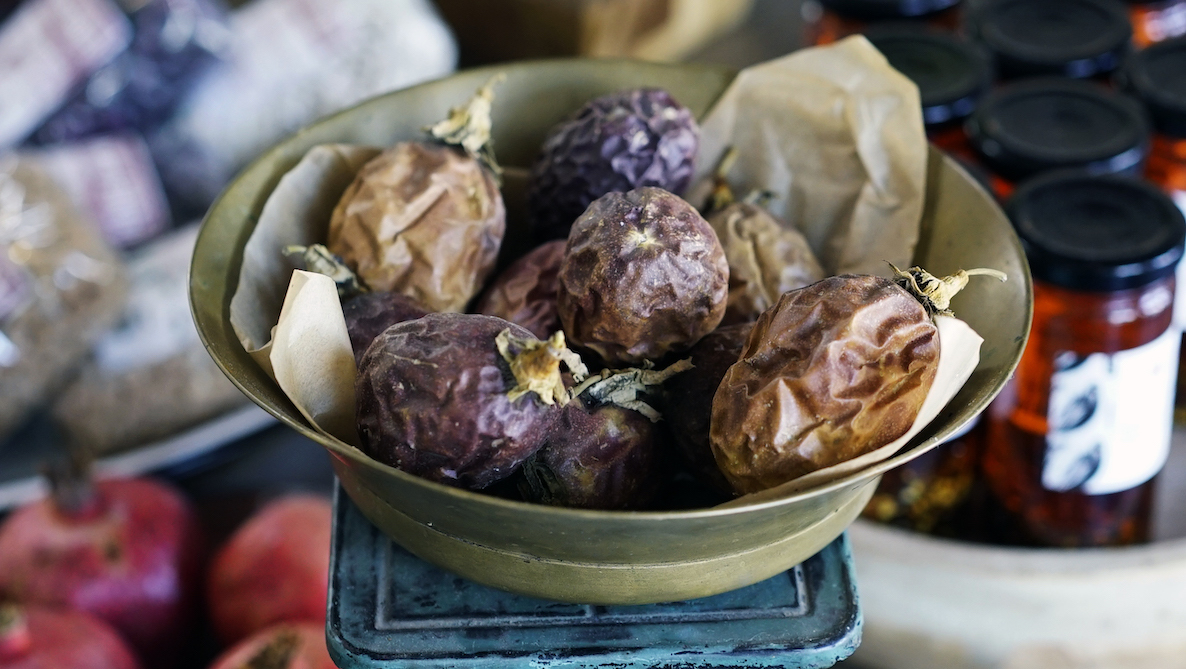
Passionfruit
Had you always been interested in writing?
Writing is just kind of in my blood. I come from a family of writers. It was always what I felt like I should be doing, like, this is who I am. So when I got the Daily Candy editor job, it was a complete dream come true. My job was to explore Chicago and integrate myself into the creative community. When I started getting into cooking all of my stories started to be more and more about food. At a certain point I got more excited about cooking and entertaining then I did about writing. I felt very strongly that I was headed someplace new and I needed to explore this. And I wanted to learn from somebody. I didn't really feel like I knew was I was doing. And I was like, oh, I want to go work in a kitchen. And then I was like, well, whose kitchen would be a dream kitchen to work in? And my first thought was Yotam Ottolenghi, He’s the vegetable whisperer, the man who introduced vegetable cookery to the United States.
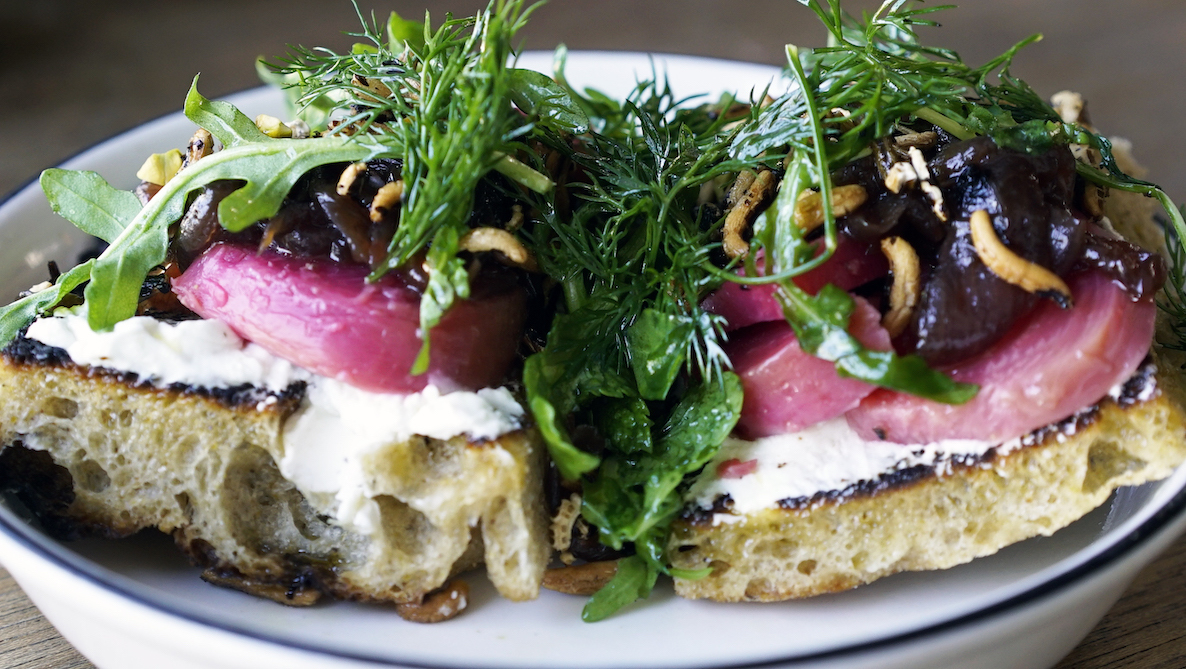
Smoked Beet Tartine
Learn from the best!
Every time I want something, I just tend to write a letter and ask somebody if I can do something for free. And most of the time people will just say yes. It's been an incredible lesson. So I wrote a blind e-mail to his assistant and they wrote back a week later and were like, come to London, and I was like—I opened the email and then I closed it and I was like oh shit oh shit it happened! I didn’t really think they were going to say yes, but now I can’t not go! So I booked a three and a half week trip to London and staged at Nopi. And from that point forward I was a changed person. It opened me up to a really different part of cooking. I mean, cooking in a restaurant is so different from cooking at home. But also I was in this place that was hugely inspirational. That’s when I fell in love with London and I fell in love with the international flavors. That trip was as much about eating and exploring as it was about cooking and learning. The exec chef there [Ramael Scully] took me under his wing in a huge way and taught me pretty much everything. I came back and I was like, I'm done. I just knew.
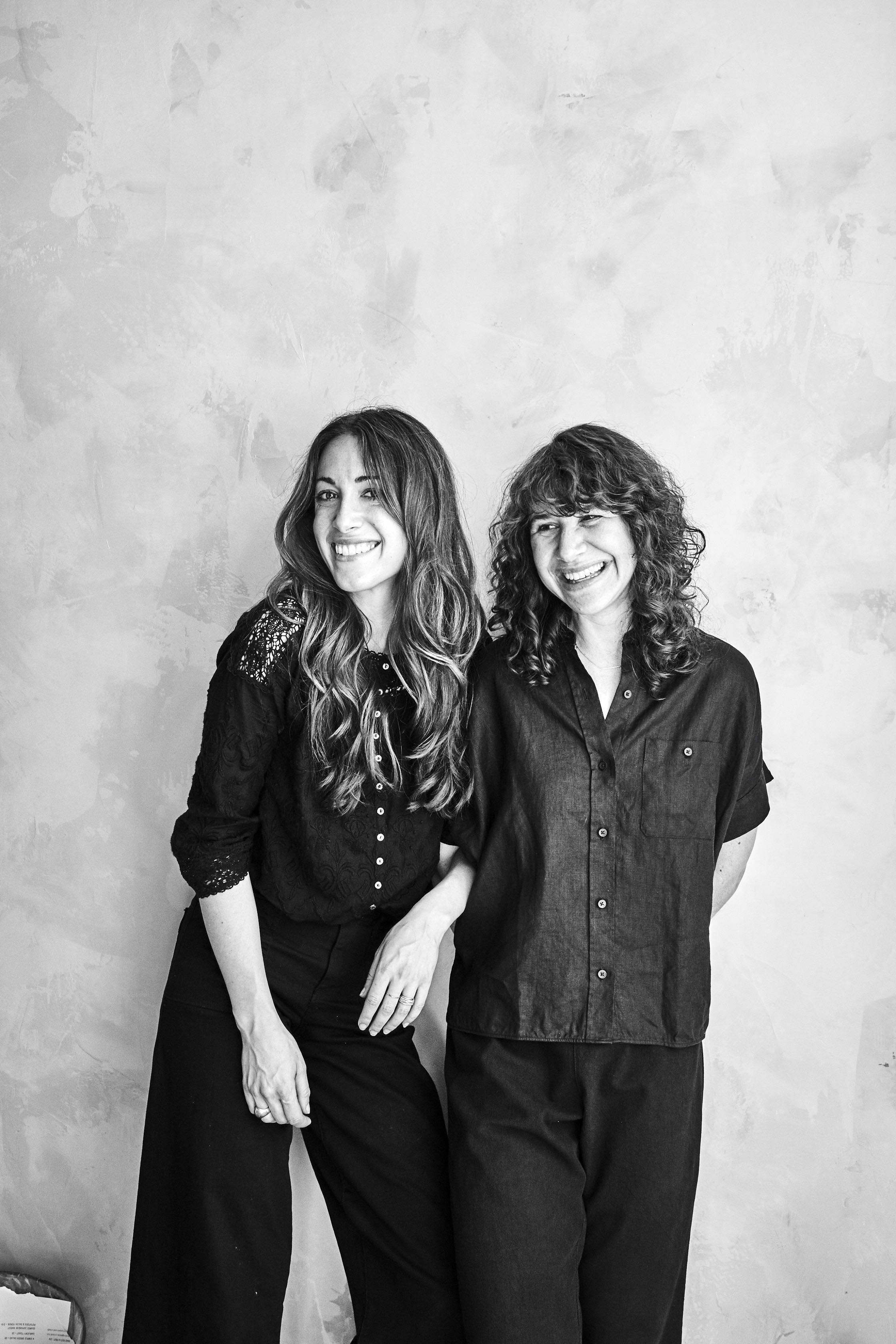
Photo by Gentl + Hyers
How did you meet Heather?
Heather and I met in 2010, shortly after she moved from New York to Chicago. Our friendship was pretty much built around food. It revolved around talking about food, cooking food, eating food. Heather was the editor of Tasting Table [a food and drink website], her job was actually to eat. And I think that we found in each other people who loved exploring, who were pretty endlessly curious.
How did you decide to start a restaurant together?
When we were in Chicago, we started two food and design markets. And we realized that we could actually build something tangible and bring people together to celebrate the things that we loved and cared about. It felt just like a moment of, you know, when you wake up and you're like, oh, this is what I want. This is more fulfilling than any article. We loved working together, and fast forward, like a year and a half, Heather’s job at Tasting Table ended and she moved to New York. I knew that my time was coming to a close at Daily Candy but I didn’t know what I was doing next. I had been staging at restaurants around town. I knew I wanted to do something in food, and then, gradually, I knew I wanted to have a restaurant. I also knew I didn’t want to do it alone. And then Heather wrote me an e-mail one day that was essentially like, I felt like she was proposing to me. She said, I want to do this thing—and she and I had not talked about this before—but she was like, I want to do this thing, I think we should do it together, here’s what I’m envisioning . . . And so I called Heather immediately and I was like, I want to do this, I've been thinking about this, this is perfect. And we started building our business plan.
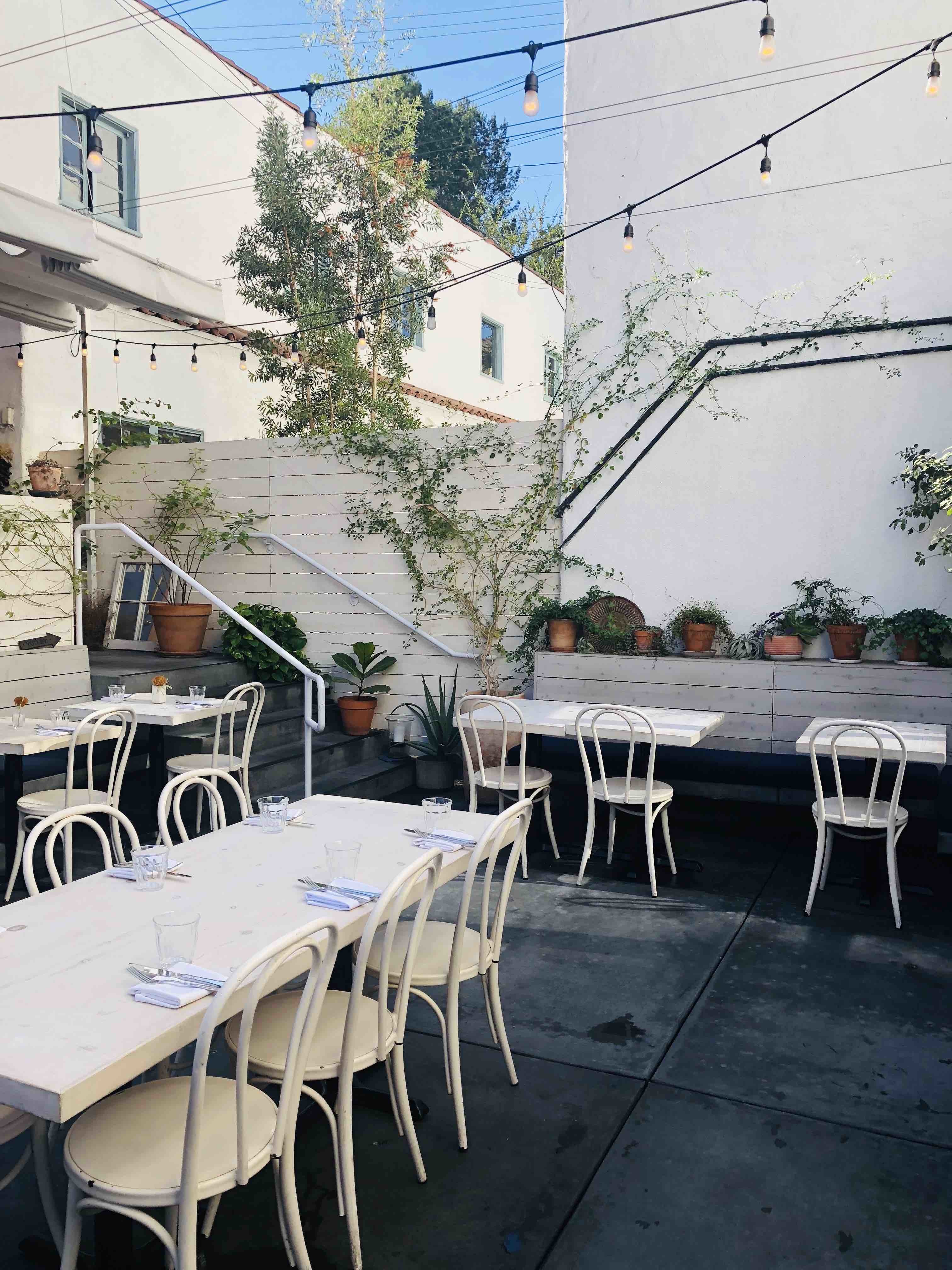
Botanica patio
Did you always know you wanted to be in LA?
We actually thought we were going to do it in New York. We were so connected to the food community there. New York felt like the epicenter of food in the States at that point. And then somewhere along the way, we got distracted and ended up in California. I don't know how, neither of us really remembers. But all of a sudden we were like, we're just going to check LA out and see what's happening there. And I mean, it took 90 seconds of us being here. And we were just like, okay, we're done. We went to a farmers market in the middle of February.
Which one?
We were actually at the Silver Lake farmers market, which is one of the tiniest ones. It didn’t matter. We were so excited to be in a place where things were growing all around us all year. One of the most elemental aspects of Botanica is that we are showering love and affection on vegetables and fruit. And it felt very obvious to us that this is where we should be. And then five weeks later, we were both living here.
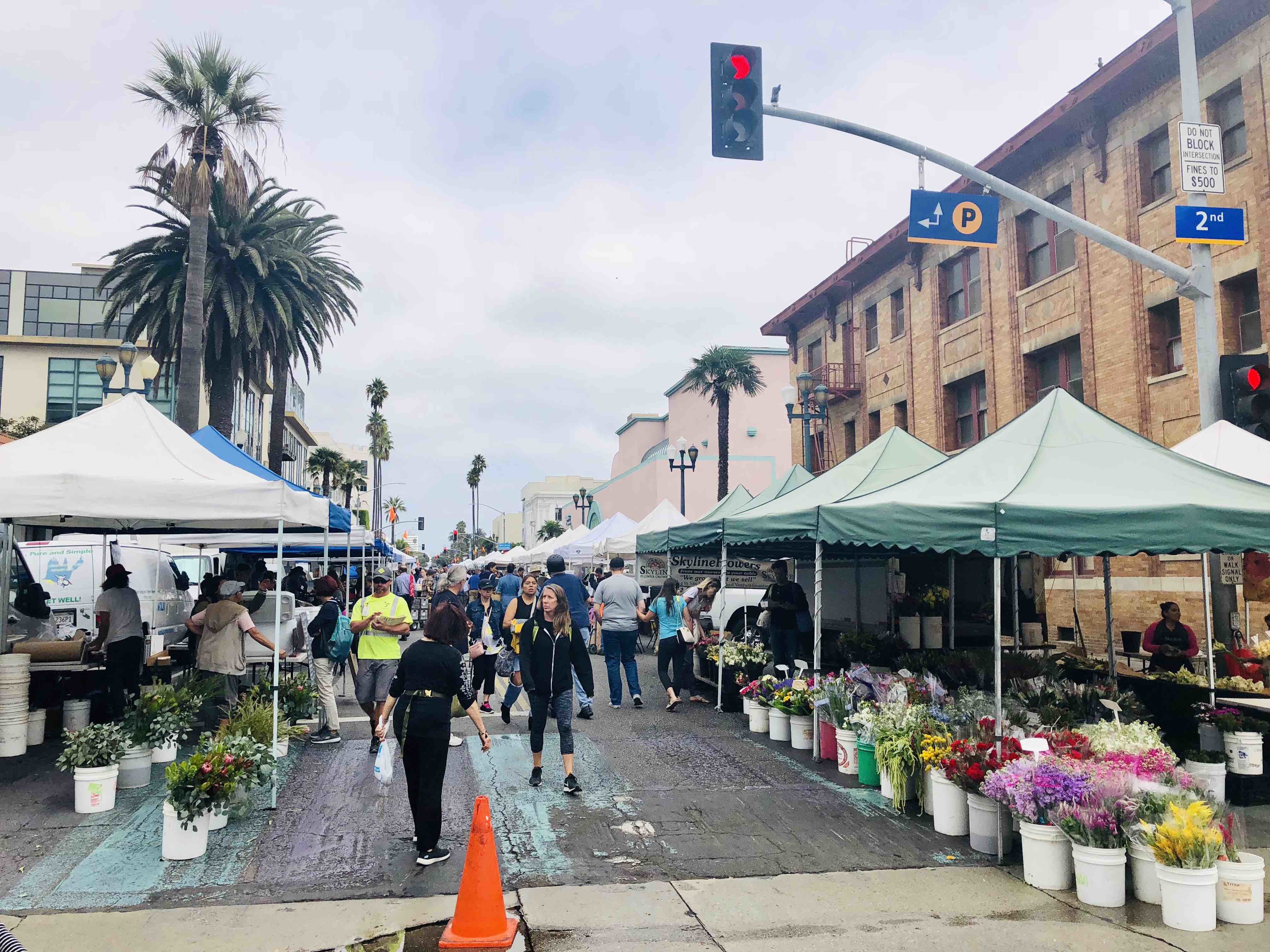
Santa Monica Farmers Market, Wednesday 11/7/18
Do you go to the Santa Monica Farmers market?
We go to the Santa Monica Farmers Market twice a week on Wednesdays and Saturdays and we do Hollywood on Sundays.
Are there any farms in particular that you work with?
We work with so many farms: Thao, Milliken, Carpenter . . .there's a giant laundry list of people we work with. Thao grows incredible Asian ingredients. We work with GrowGood--we have a standing order with them for micro greens and flowers, but sometimes they bring little extras and that's always really fun.
You’ve said that Botanica isn’t just about the space and the food, you’re also trying to establish a healthy work culture?
The culture that we create here is almost more important than the food that we serve. When we opened this place, we wanted to do things differently. It was not the French brigade system. We knew that we could create an environment that felt nurturing, instead of super aggressive. And I think the reason that we have very much like a family here, in every sense of the word, I think it's because we've created an immense amount of trust and good faith. In terms of the social justice element, we've tried really hard to get involved in as many events for nonprofits as possible. We hosted Freya Project for the first year they were in LA. We just did a big event for Planned Parenthood the other week. We work with Chrysalis downtown to help find employees, they’ve been an incredible partner.
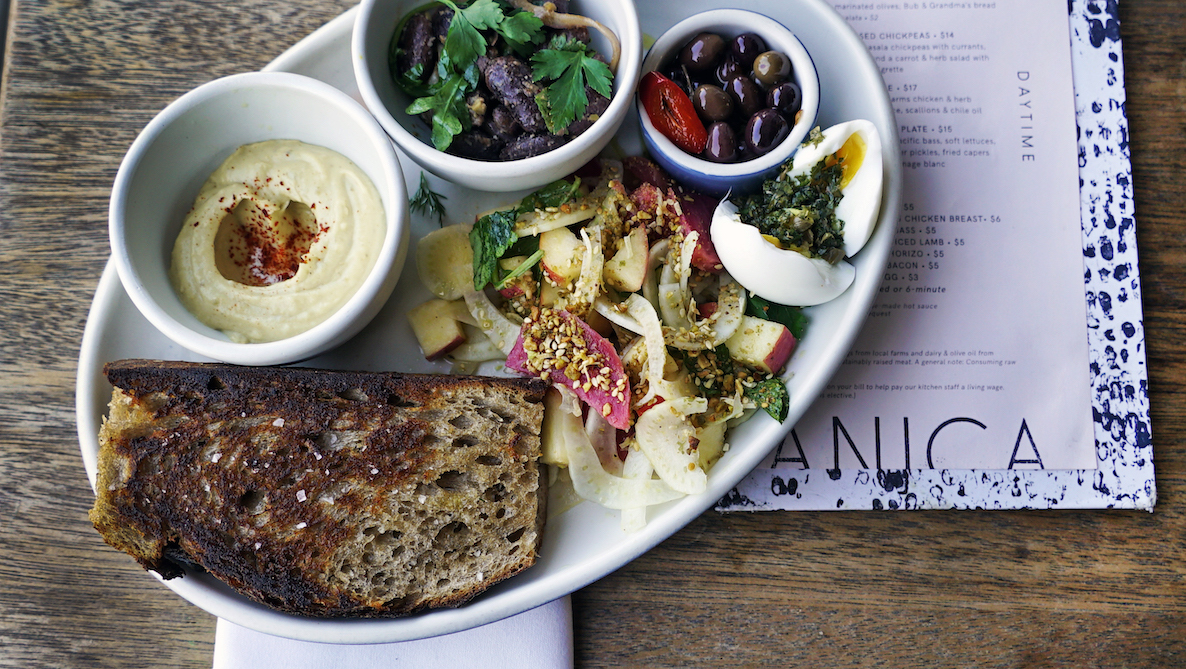
Morning Mezze
What would you recommend for someone visiting Botanica for the first time?
Daytime: Our Morning Mezze is a really good expression of what we do and the way that I like to eat which is essentially putting 20 different things on the table and eating all of them at once. The Morning Mezze rotates with the seasons but it's a constant on the menu. Nighttime: It’s so boring to say our Japanese sweet potatoes and salsa verde but it's just the simplest, most satisfying dish. It’s been on our menu since day one. It’s Japanese sweet potatoes that we parboil and then sear on the plancha so you’ve got a really nice caramelization and then we serve it with salsa verde which is full of herbs and shallots and lemon zest and capers so it's really piquant so you have the salinity and the herbs with the really creamy sweet potato and it’s like a match made in heaven.
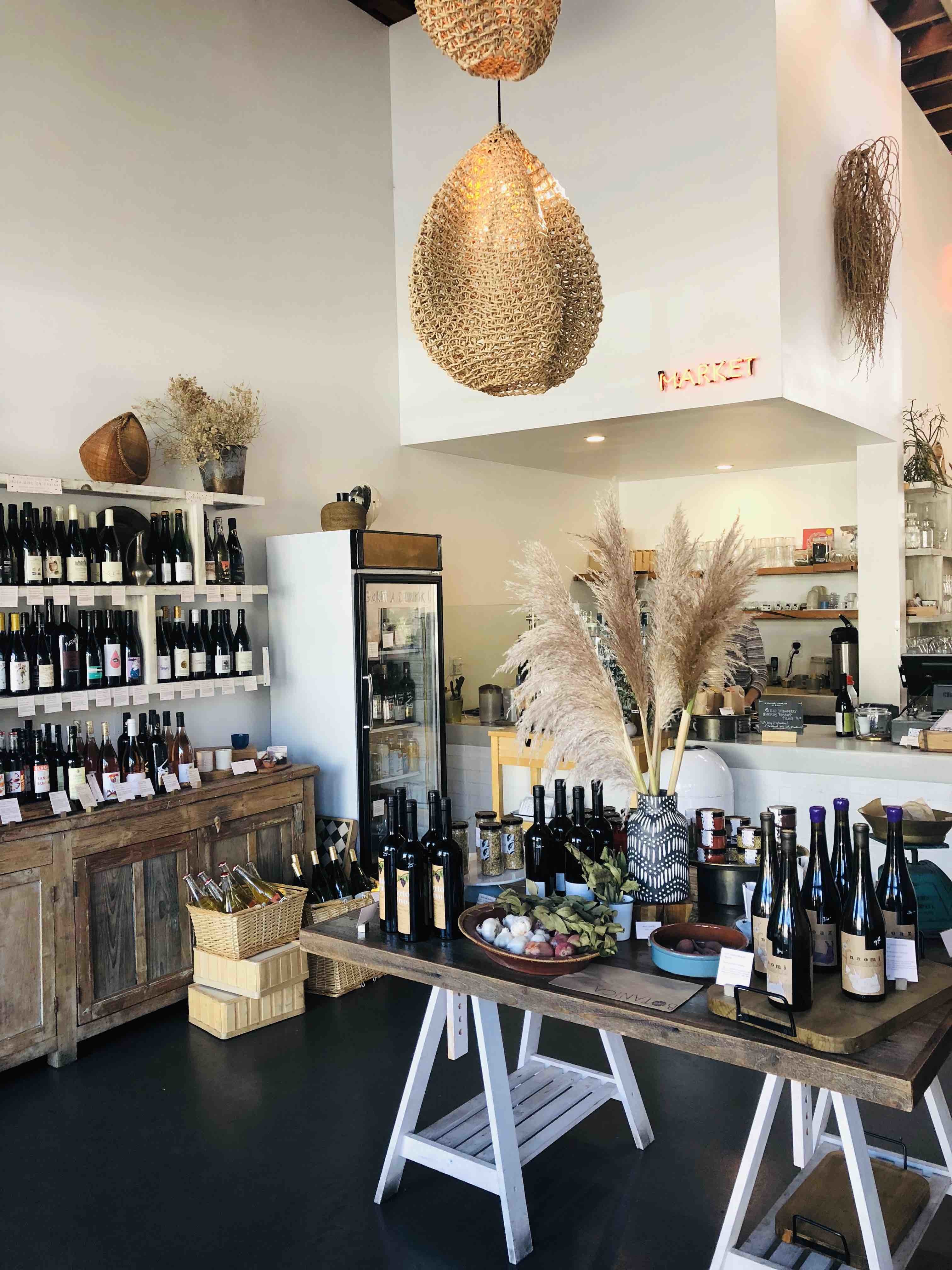
Botanica market
Any recommendations for anything at all, maybe something you’ve discovered that you're excited about?
I want people to come here and drink all of our natural wine. I think that's one of the most special parts about this restaurant and natural wine is becoming more popular and prevalent. Our list is endlessly exciting, it's always changing. And it's opened up this whole world of discovery for me as a wine drinker.
Any future projects?
This can be so overwhelming that sometimes you can’t even really think about that. But yes, of course, we have aspirations beyond the four walls of this place. We talk a lot about whether we want to do a cookbook. Obviously a publishing project is just very us. One of the things that we thought really deeply about when building the business was to build a business that has a lot of different elements. And then from there, you see what works, and it gives you a lot of avenues and options for growth. So if and when we open another Botanica, is it just a natural wine bar? Is it an extension of the market? Is it a breakfast place? Who knows what?
Lastly, what did you have for dinner last night?
I actually closed last night so I was here and I ordered our little gem salad.
After our talk with Emily, as we’re digging into the fall fattoush-y salad, two young women sit down at the table next to us. One of them tells the server that it’s her friend’s birthday today and they’ve come from Mexico City hoping to meet the women behind Botanica. Looks like their dream of building a community is succeeding far and fast.
Written by Krystal Chang
Recipes for JAM
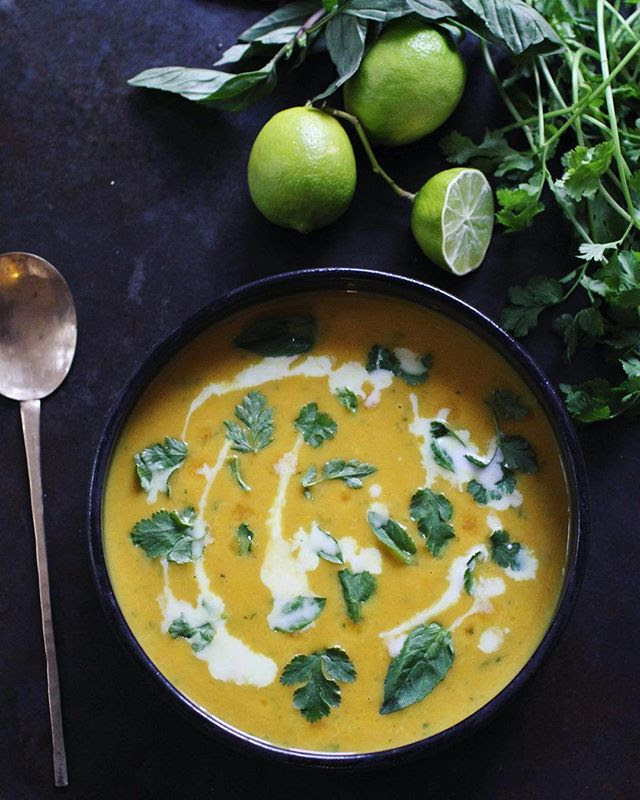
One of our favorite ways to take soup up a notch is to nest a beautiful salad on top. When it comes to toppings, the sky’s the limit: a sprinkle of toasted nuts or seeds, herbs and herb oils, fresh fruit or veg. Our squash soup is an excellent example of a salad taking a soup to the next level, flavor- and texture-wise. Hearty and aromatic with a Southeast Asian bent, it gets an extra bit of brightness from a salad of fruit, veg and herbs.
Southeast Asian Butternut Squash Salad-on-a-Soup
Makes 4 servings
For the salad:
2 tablespoons lime juice
1/8 teaspoon fresh grated ginger
6 tablespoons olive oil
Sea salt
1 cup mint leaves
1 cup cilantro leaves (use the stems below!)
1⁄2 cup diced apple
1⁄2 cup pomegranate seeds
1⁄2 cup slivered scallions
For the soup:
4 cups peeled, chopped butternut squash
A good glug of olive oil or melted coconut oil
sea salt
2 tablespoons coconut oil
1 heaping tablespoon minced ginger
1 heaping tablespoon minced fresh turmeric
1 serrano chile, minced
1 large shallot, minced
2 garlic cloves, minced
3 tablespoons minced cilantro stems
1 tablespoon soy sauce
2 cups full-fat coconut milk or cream (preferably Kara brand, divided, plus more to garnish
1⁄4 cup lime juice, plus more to taste
1⁄4 cup cilantro leaves
To make the salad:
Combine the lime juice, ginger and olive oil and season with sea salt. Combine the herbs, apple,
pomegranate and scallions in a bowl and toss with the dressing just before serving.
To make the soup:
Line a baking sheet with parchment paper. Toss the butternut squash in olive or coconut oil,
season generously with salt, and roast in a 400F oven until caramelized and soft. Warm the
tablespoon of coconut oil in a sauté pan over medium-high heat and add the ginger, turmeric, chile, shallot, garlic and cilantro stems. Sprinkle with a bit of sea salt and sauté, stirring regularly, for 4-5 minutes, until the aromatics are softened.
Transfer the sautéed aromatics to a blender; add the roasted squash, soy sauce, coconut milk, lime juice and cilantro leaves, and puree. You’ll likely need a few splashes of water to move things along. Give it a taste and add more lime / soy / water / coconut milk as needed.
To serve, pour the soup into individual bowls, drizzle with coconut milk, and garnish with a generous heap of salad.
For Dark Chocolate Lovers

This tart is a real show-stopper -- it’s been in our rotation from the early days (back when we were catering 160-person weddings ourselves out of a tiny home kitchen!). It’s not often you come upon a dairy-free chocolate “mousse”; this one is the exception to that rule. (We use quotes because this isn’t a true mousse; it’s deeper, darker and has more heft -- hence ganache!) We use 100% chocolate in order to control the sweetness (the goal is to let the chocolate shine!) -- honey adds balance and complements the fruitiness of the chocolate -- and a deeply toasted nut, date and coconut crust brings it all together (and adds that salty kick we all know and love).
Dark Chocolate Olive Oil Ganache Tart
Makes one 9” springform pan
For the crust:
3⁄4 cup raw almonds
1 cup raw pecans
5 tablespoons melted coconut oil, divided
1 cup pitted Medjool dates
3⁄4 cup coconut shreds
1 teaspoon Maldon, scrunched with fingers before adding
Preheat your oven to 375F and line two baking sheets with parchment paper. On one sheet toss the almonds and pecans with 3 tablespoons of the coconut oil, making sure everything is thoroughly coated. Sprinkle generously with Maldon. Spread the coconut shreds on the other baking sheet. Toast the nuts until very darkly toasted (you want the inside to resemble a paper bag!), about 14-16 minutes. Toast the coconut shreds until golden, about 8 minutes. Let everything cool for a few minutes, then add all of the ingredients to a food processor and pulse until well incorporated — the mixture should stick together when pinched and the nuts should be very fine. Line the bottom of a springform pan with a circle of parchment paper and grease it all with coconut oil. Press the crust evenly into the bottom of the pan and refrigerate for about 30 minutes (alternately, freeze it for 15 minutes).
Dark Chocolate Olive Oil Ganache
Makes 1 9” springform pan
400 grams 100% chocolate (we love Valrhona)
1 cup fruity extra-virgin olive oil
10 cold eggs, separated into two large bowls 280 grams honey
Olive oil and sea salt for garnish
Gently melt the chocolate in a small saucepan, bain-marie or microwave. Whisk in the olive oil. When cool, transfer the mixture to a large bowl. Gently heat the honey in a saucepan until thin and runny.
Beat the egg yolks for a minute or so, then slowly stream in half of the honey until the yolks are pale yellow, frothy and increased in volume -- this should take a few minutes. Clean your beaters well, then beat the egg whites until frothy. Slowly stream the rest of the honey into the egg whites, beating all the while, until the mixture turns glossy and you see peaks (feel free to test with a fingertip; the meringue should nest on top of it). If you over-beat the whites, your mousse will be firmer, but still delicious — we’ve done this too many times to count.
With a silicone spatula, GENTLY but quickly fold the yolks into the chocolate-olive oil mixture until few yellow traces remain. Then carefully fold in the whites, bit by bit, until all you see is chocolate. It might look like it’s separating, but keep at it -- it’ll set if you continue to fold through the separation. You’ll know it’s done when the mixture is glossy and smooth. Quickly pour the ganache into the tart shell and tap to remove air bubbles. Refrigerate for a few hours until set. (Note: If the mixture does separate, you can stick it in the fridge or freezer for a few minutes and then resume folding.) Serve with a dollop of whipped cream or creme fraiche, a drizzle of olive oil and a sprinkle of Maldon salt.


